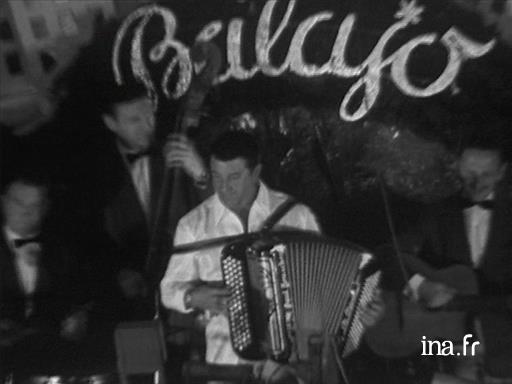History of the bals musette (dances with accordion music)

Information
On 14th July, the accordion becomes the king of the party. Celebration of a popular instrument that transcended the ages and crossed borders despite its detractors. Alternating musical archives and interviews with accordion lovers and virtuosos, this document traces the career of this portable piano with straps, from the creation of the accordion to its boom in dance halls located on the rue de Lappe, like the Balajo, or in guinguette taverns on the banks of the Marne.
- Europe > France > Ile-de-France > Paris
Context
It would not be possible for a Frenchman to write about the migration of dances without mentioning the «musette» style. The style was born at the beginning of the 20th century when Italians inhabitants of Auvergne arrived in Paris, the bals musette were mainly held on rue de Lappe in the Bastille district. Emile Vacher, who created the Bal musette, first called it bal des «bougnats», who were café owners who sold cold. From the 19th century onwards, we can clearly see the coming together of two types of ballroom dancing and waltzes, performed to the sound of the musette and French and Italian bagpipes. Gradually, the accordion replaced the musette, accompanied with percussion instruments and a double bass, and the usual bourrée dance from Auvergne was dethroned by the waltz once and for all. And the whole of France danced and still dances to the sound of the accordion which became a very French emblem, with renowned artists such as those cited in the video clip.
In the musette style, couples danced tightly together, probably because the halls, despite their abundance in the district, were rather cramped. It should be noted here that the waltz (with its signature of 2x 3 steps in triple time x 2) also had to evolve: the characteristic strides of the Viennese balls were replaced by very small steps on the same spot. But, as heard in the report on the debutantes ball in Vienna, musette couples added a second difficulty in addition to the narrowness of the halls, i.e. the sense of rotation: they danced the other way round", i.e. to the left. Why? It is a way to show greater skill than that possessed by the general public, because the sense of rotation to the left is much more difficult on a dance floor where the couples themselves are moving anti-clockwise around the room, i.e. to the left. A real challenge! Each rotation is actually greater than 360°.
But there is another facet to the choreography that characterizes the valse musette: the famous «toupie» (spinning top), which was another consequence of the lack of room on the crowded dance floor (as was the case for rock, which was automatically danced 'in a line' in the basements of Saint-Germain-des-Prés at the time). For the toupie, you have to dance quickly of course, to the left, i.e. the most difficult direction, but moving as little as possible. The feet are constantly sliding across the floor, and are only really pressed against the ground on the third step. This produces a fascinating dissolve when you see the couples. The dancers' arms, which are kept by their sides to save space, are skillfully opened out in-between the other couples. Obviously, there were competitions for this practice, the best of the best could dance on a table! Apparently!
But in bal musette, there was also java, an offshoot of the mazurka (both in triple time, but with three steps in the java, and two in the mazurka). From a musical standpoint, we once again find an ingenious mixing of styles: what musicians call "triple time division", which comes from the swing. The waltz can easily be written in triple time, and possibly divided into half-time. The java is written in the same way, but it is supposed to be played differently, with triolets. Here is a pictorial representation: 
It is thanks to these triolets that dancers recognize the java when they hear it. In this respect, it should be noted that the famous java blue is not really a java at all, but a simple and beautiful waltz.
Lastly, in the musette, now the tango, we also find the paso doble (binary rhythm and moderated movement), the slow fox trot (slow steps to a 4/4 time signature), the French bolero (three steps), etc.





